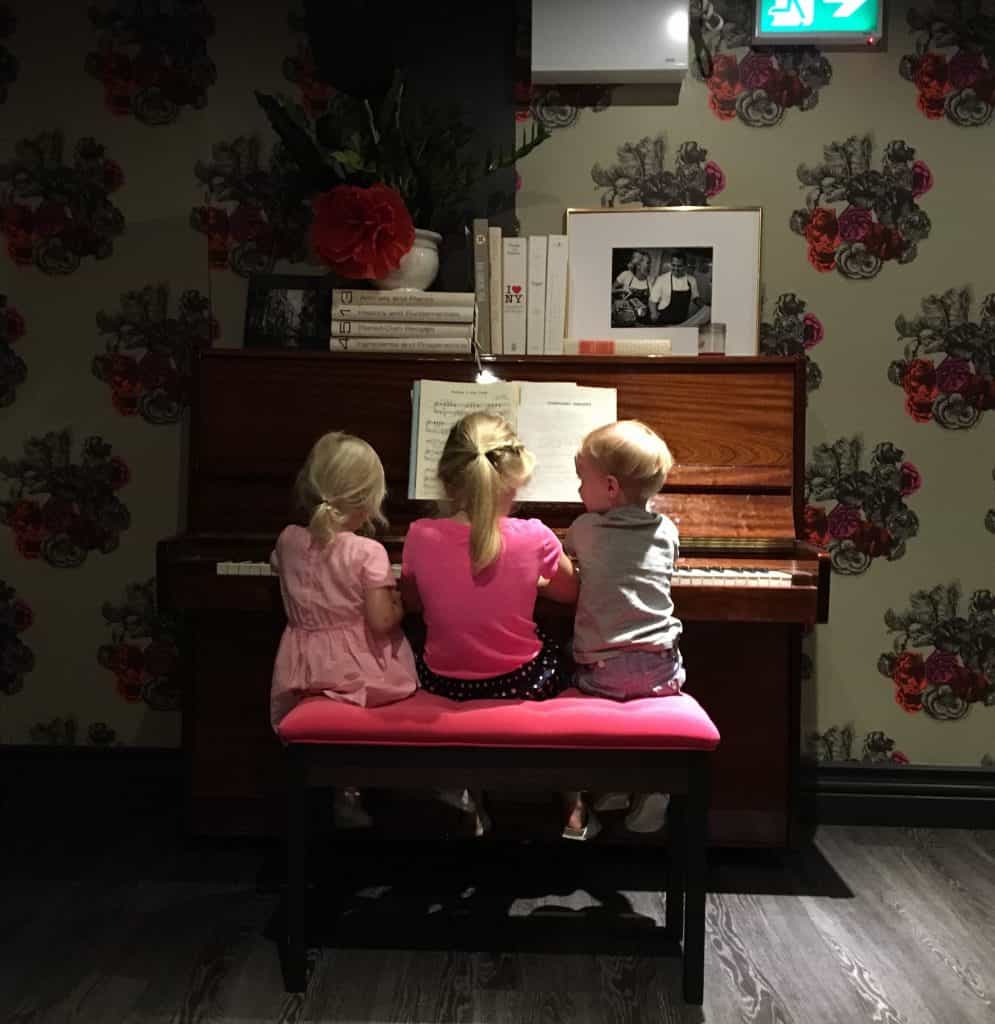I spent close to 10 years working in the restaurant industry.
Here’s a little secret (which you probably already know):
More often than not, families who bring their children to dine are looked down upon by management and staff as yet another mess to clean up, another kid with allergies, another ruined dining experience for their best customers, and another huge pain in the butt!
And so Chuck E. Cheese was invented. You’re welcome there, but not elsewhere, is the not-so-subtle message from higher-end restaurants.
That’s why I was so surprised when I took my family went to a hot Toronto restaurant which has received incredible reviews (Piano Piano). I was getting myself ready to deal with the quiet displeasure of the staff, management, and other diners…
But when I got there, I saw that it had done something incredible. It had found a way to be both a place for parents and children who enjoy a great experience and great food, without sacrificing an ounce of atmosphere or experience for the other diners.
When you first walk into Piano Piano, it’s everything you’d expect from a trendy Toronto restaurant-meticulously laid out tables, servers working with incredible grace, and a quiet hum of conversation.
There’s nothing new about that. What was very new to me, was downstairs they had created a restaurant within the restaurant called Piccolo Piano, and it’s specifically designed to create a warm and welcoming family atmosphere where kids can have an absolute blast.
For the kids, Piccolo offers a special menu created in collaboration with a children’s nutritionist and offers kids a playroom with chalkboard, dress up station, piano, and vintage arcade games. They’re also entirely allergy friendly.
Meanwhile, parents are free to enjoy classic cocktails and order from the menu of the higher-end Piano Piano restaurant upstairs.
So how does this apply to you and your business?
Quite simply, this has everything to do with the power of segmentation and the philosophy of Evergreen.
Most businesses create a take it or leave it experience. This is how we do things. This is how we offer it. Take it or leave it.
But the owners of Piccolo understood that if they looked at kids in restaurants as an “either/or” choice, they’d be alienating a large portion of their potential market. After all, there are a lot of parents out there who have great taste and want to enjoy a fantastic night out without feeling like everyone in the place is staring at them. When I’m going out with my family, I’m definitely in this segment.
Meanwhile, another segment of their market seeks to enjoy that same quality food, but experience it without children running around or parents passing off the iPhone and Netflix to keep the little bugger in his seat. I’m not going to lie–when I’m traveling on business, I’m often in this segment.
But there’s a substantial segment of every audience willing to give up a portion of the expected experience, to have a better “whole experience.”
Here’s a real world example:
“Our clients need to be able to get a response from us within one hour at any time of day!” is something I’ve heard from some of my manufacturing clients, and they’re right. Their current clients need that.
But it’s possible that there’s a segment of the market out there who wants their brand name, their quality product, and who doesn’t care about one hour service. Ignoring this second group can be very costly.
That’s the problem with choosing between this OR that. Jim Collins called it “The Tyranny of “Or.” What Piano Piano shows us so elegantly is that there is a whole world of room for “AND.”
“We can do this AND that.”
The key insight here is that you can create offerings that ensure an incredible experience for your customers without requiring any group to compromise. That’s the genius of Piccolo Piano.
Here’s my challenge for you this week:
Think about your business, and the implicit assumptions you’re making about who your ideal client is.Try to identify where you’re creating artificial barriers for your customers and prospects, and succumbing to the Tyranny of Or.
In almost every business, there are ways to unbundle or repackage the product & service offerings so that they appeal to broader markets, without sacrificing what’s important to any market.
What are different ways you can bundle your value so that it can be enjoyed and experienced by various groups in your market?
